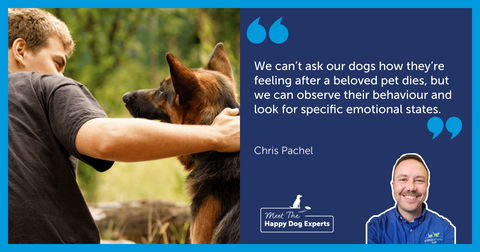
How To Make Sure Your Dog Gets Enough Exercise In Winter
As we slip into our coats and pull on our scarves, it can only mean one thing – winter is here! And while this might be great news if you love cosy evenings in front of the fire, this can pose a range of challenges for us dog lovers. Mainly, how do we go about keeping our furry companions active and engaged despite the cold weather? Well, don’t worry too much. We’re here to share our advice for walking dogs in cold weather as well as offer a few tips and thoughts for dogs in winter!
The Importance Of Exercise
Regardless of the season, daily exercise is crucial for our canine friends. Not only does it help them to maintain a healthy weight, but it also supports their mental and physical well-being by preventing frustration and boredom from sitting in. What’s more, regular exercise can also help dogs cope with changes that come with the winter period. This could include anything from visitors arriving for the seasonal festivities to the increased time spent indoors by other pets, such as cats.
Still, it’s one thing saying exercise is important and another thing altogether finding a means of exercising our dogs in winter. After all, how do we know when it is too cold to walk our dogs? Let’s explore this subject further.

How Cold Is Too Cold To Walk A Dog?
The idea of taking your dog for a brisk winter walk might sound appealing, but there are a few considerations to think about before bundling up and walking our dogs in the snow. For example, the breed, size, age, and health of our dogs could all play a part in their resistance to chilly weather.
Dog breeds with thick, waterproof coats, such as Huskies, are naturally better suited for colder climates. Smaller dogs, on the other hand, tend to lose heat more quickly and are therefore more susceptible to cold weather if outdoors for a while. Likewise, older dogs might struggle with regulating their body temperature and moving efficiently, while health conditions and injuries could also impact a dog’s ability to cope in the cold.

Nor do the potential issues stop there when answering the question “When is it too cold to walk your dog?”. As you’d expect with a season known for its chilly conditions, weather factors also come into play. Wind chill, sunlight, and snow can all affect how cold the outdoors feels both to dogs and humans. Wind can accelerate heat loss, while sunlight can provide a touch of warmth. Walking dogs in snow or on ice, on the other hand, can make dogs feel a lot colder due to the direct contact between their paws and the ground.
If you do think it’s too cold outside, however, it’s important not to skip your dog’s exercise altogether. Instead, consider one of the many alternative ideas for indoor exercises for dogs!

Indoor Exercise For Dogs In Winter
When walking your dog in the cold weather isn’t suitable, it’s time to get creative. Fortunately, there are plenty of indoor exercises for dogs that can still ensure their physical and mental needs are being met.
- Hide And Seek – Engage your dog’s keen sense of smell by playing hide and seek with treats, or even yourself! This game taps into their natural instincts and provides a fun mental challenge.
- Fetch And Obstacle Courses – Adapt the classic game of fetch to your indoor space, using soft toys that won’t damage your furniture or belongings. Set up an obstacle course using household items like cushions, blankets, and even tunnels to keep things interesting.
- Stairway Fun – If you have a staircase, utilise it for a bit of indoor cardio. Dogs can run up and down the stairs under your supervision, providing a workout that’s easy to control.
- Indoor Exercise Classes – Consider signing up for indoor activities like swimming, agility, or flyball classes. As well as providing physical engagement for your dog, dog classes are also great for your pup’s much-needed social bonding!
- Training Sessions – Winter is a great time to work on training or to reinforce previously learned cues. This uses a combination of mental and physical energy, keeping your dog active and sharp.
- Mental Exercise – Use puzzle feeders, interactive toys, chew toys, and snuffle mats to challenge your dog’s mind while also providing a fun way to get treats!

Creating a Reassuring Space At Home
While these indoor exercises for dogs all present great opportunities to keep our dogs healthy and happy, it’s important to understand that spending more time indoors can also be a challenge in its own right. With this in mind, creating a comfortable and calming environment indoors becomes even more important in winter. One of the best ways to achieve this is by using ADAPTIL Calm Diffuser. This works by releasing pheromones into the air of your home that mimic those emitted by a mother dog, providing a sense of security and calmness even when outdoor opportunities are limited. Simply plug the ADAPTIL Diffuser in for up to 30 days of calm at home.
Are you interested in learning more about our ADAPTIL products or looking for more tips on caring for dogs in winter? Please get in touch! We love nothing more than hearing your stories and sharing all the advice we can. You can also stay informed with our latest guides, Q&As, and general tips by signing up to our newsletter.








































